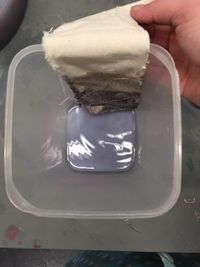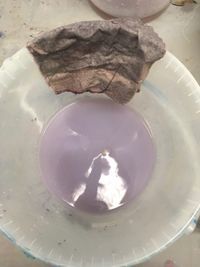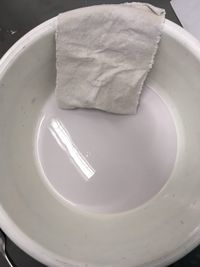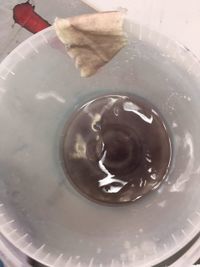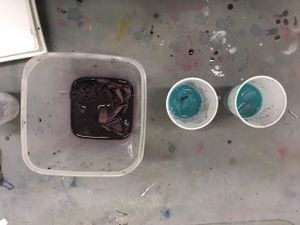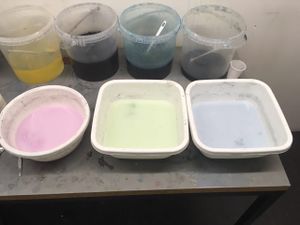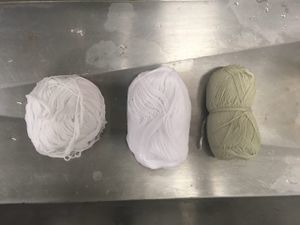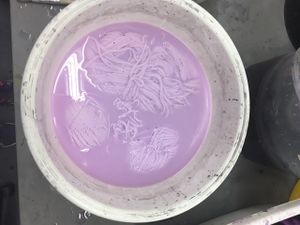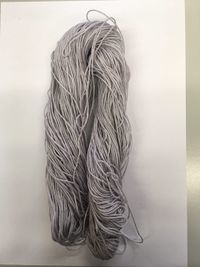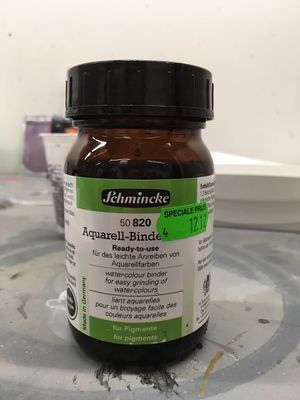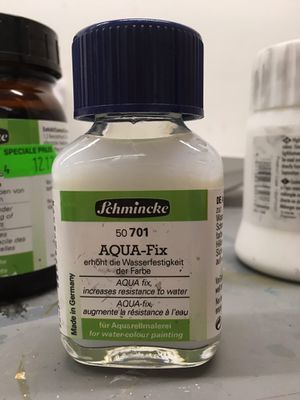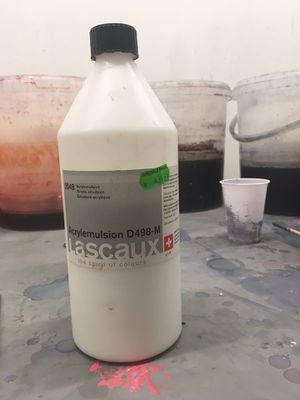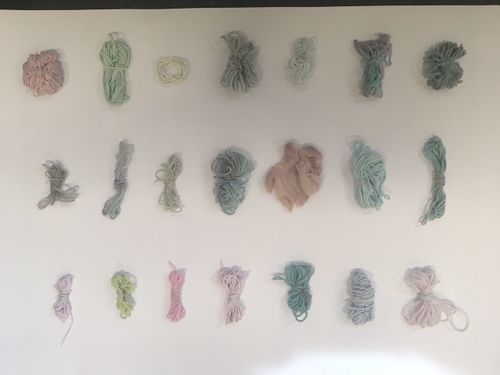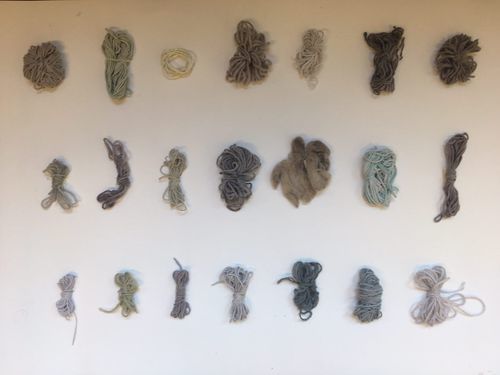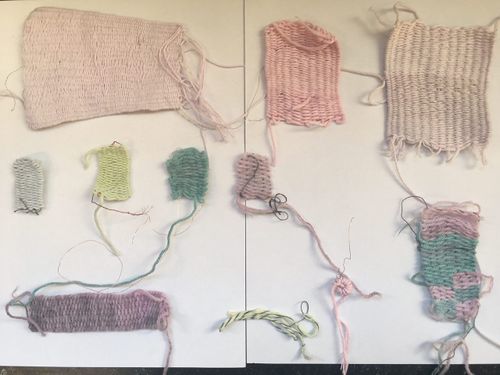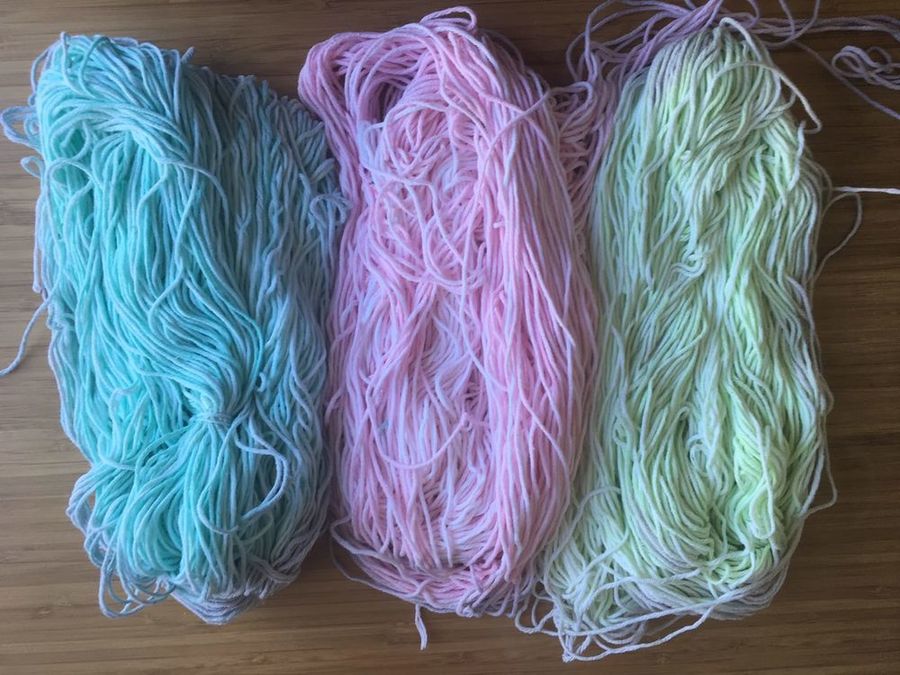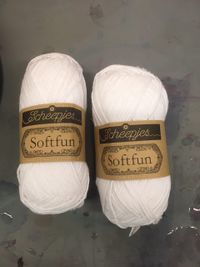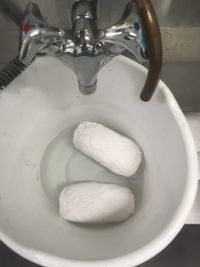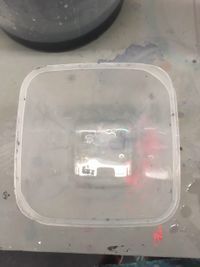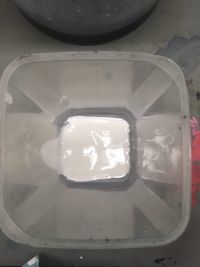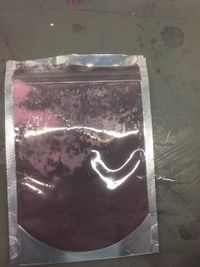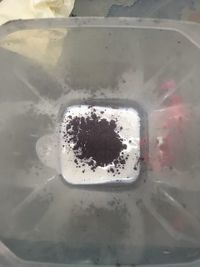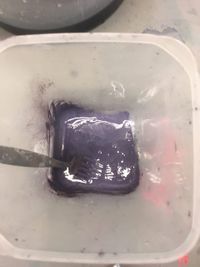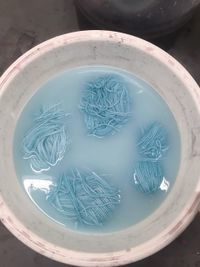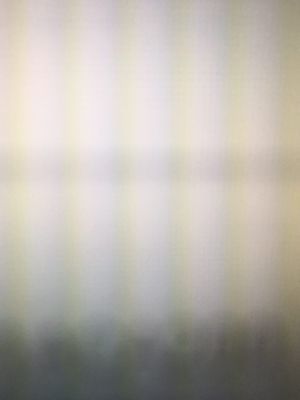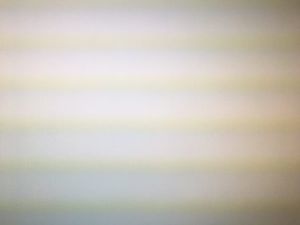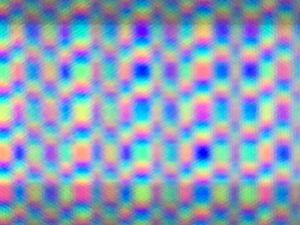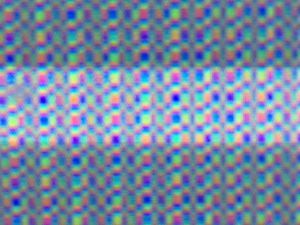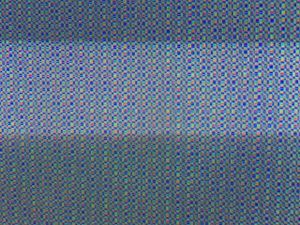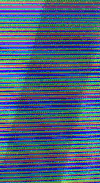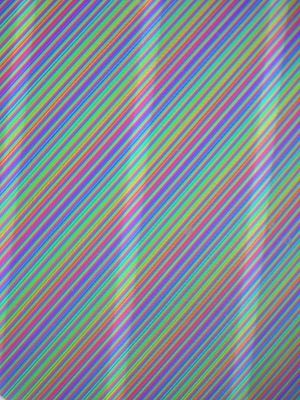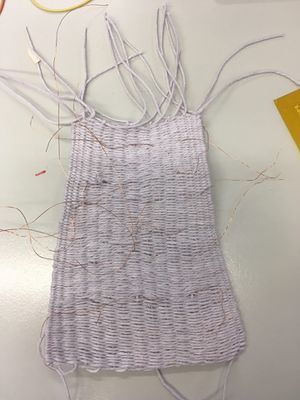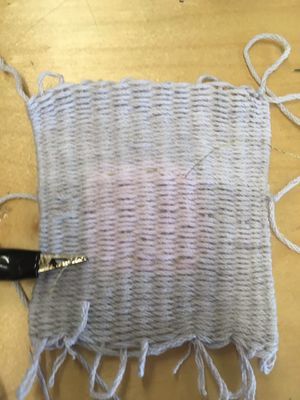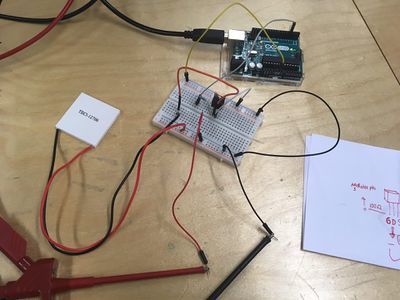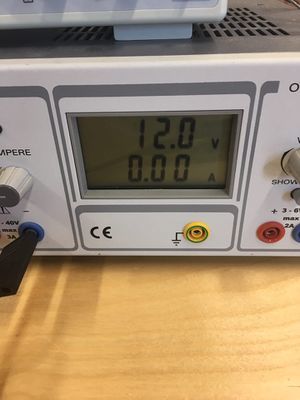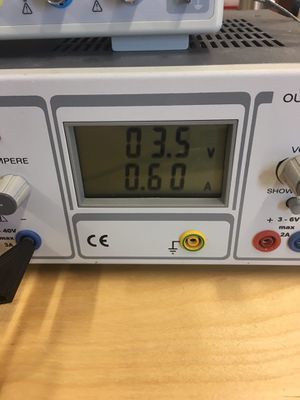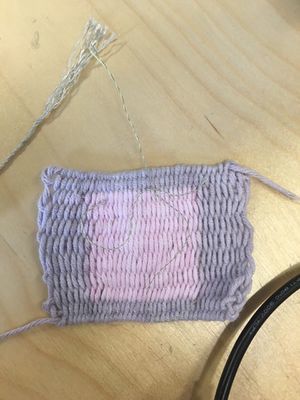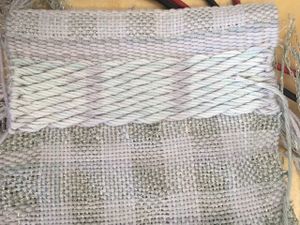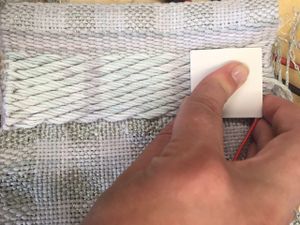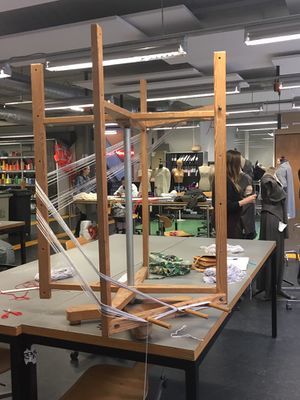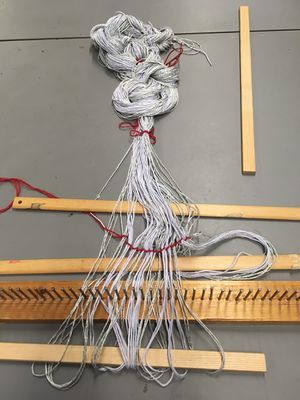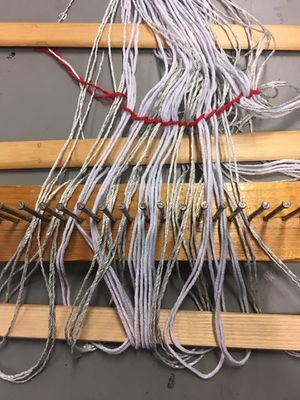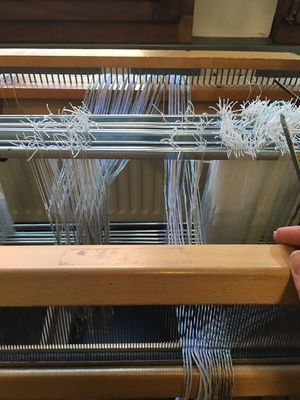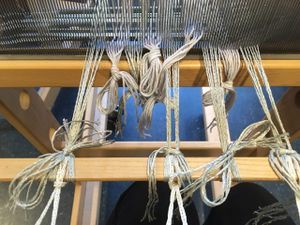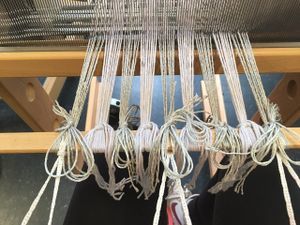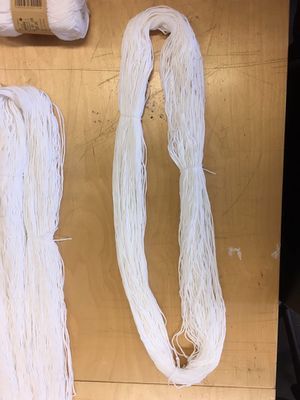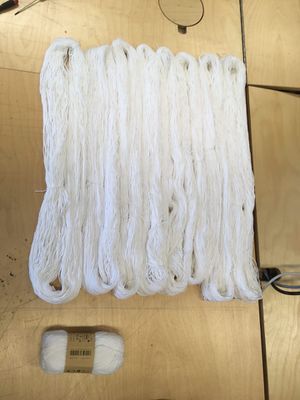Difference between revisions of "User:Vera/graduation/Textile experiments"
| (31 intermediate revisions by the same user not shown) | |||
| Line 1: | Line 1: | ||
| + | '''I once felt technology art faced greater challenges than other more permanent art forms, | ||
| + | but I now understand that in the end—all art fails | ||
| + | - Maggie Orth'''[http://www.maggieorth.com/art_100EAYears.html]<ref>Maggie Orth, ''[http://www.maggieorth.com/art_100EAYears.html]'', 100EAYears</ref> | ||
| + | |||
| + | |||
| + | She looks form a designer perspective, thought art and technology . <br> | ||
| + | I think she might forget not the art failt but the system of from art thought technology was't work out. <br> | ||
| + | I belief also a system without technology is already a technology on his one. <br> | ||
| + | Experimentation is also the key to found the possibilities of knowing. <br> | ||
| + | |||
| + | |||
| + | For this document of Experimentation I just did. I don't know what will work out for my, A textile as screen. | ||
| + | this Thermochromic Textiles feels in a way the best way to do. It wil be changeable, abel to touch and open for Experimentation. | ||
| + | |||
| + | |||
| + | |||
== '''Thermochromic Textiles''' == | == '''Thermochromic Textiles''' == | ||
| + | |||
| + | But what are Thermochromic Textiles? | ||
The word "thermochromic" <br> | The word "thermochromic" <br> | ||
| − | |||
Thermo comes from the Greek word "thermos," which means warm or hot. <br> | Thermo comes from the Greek word "thermos," which means warm or hot. <br> | ||
Chromic comes from "chroma," meaning color. A thermochromic substance changes color as it changes temperature. <br> | Chromic comes from "chroma," meaning color. A thermochromic substance changes color as it changes temperature. <br> | ||
In fabrics, a special dye acts as the thermochromic agent. <br> | In fabrics, a special dye acts as the thermochromic agent. <br> | ||
| + | |||
| + | Thermochromic materials change color reversibly, especially through the application of thermochromic dyes whose colors change at particular temperatures. Thermochromic materials using microencapsulated dyes were developed in the 1970s and subsequently have been used mainly in the textile and novelty industries [1]. The leuco-dye-type thermochromic system has been most commonly used, which undergoes a reversible change from colored to colorless when subjected to temperature raises [2]. Today, the thermochromic technology has been developed into the smart textiles era and the conjunction of electronic engineering can make an available range of new media for exploitation [3, 4]. [https://www.hindawi.com/journals/mpe/2015/151573/] | ||
| + | |||
== '''Dyeing Textiles''' == | == '''Dyeing Textiles''' == | ||
Experimenting whit thermochromic pigments and thread.<br> | Experimenting whit thermochromic pigments and thread.<br> | ||
| + | |||
| + | I really don't know what to buy of what to use for threads. | ||
| + | Because it it's so easy to find a dyeing process. | ||
| + | |||
| + | I fount this links: | ||
| + | |||
| + | |||
pigments bought at: <br> | pigments bought at: <br> | ||
| Line 94: | Line 121: | ||
== Conductive Thread == | == Conductive Thread == | ||
| + | |||
| + | ==Weaving structure== | ||
| + | |||
| + | [[File:Lcdpixel.jpg|500px]] | ||
| + | [[File:Pixels.jpg|500px]] | ||
| + | |||
| + | [[File:Compueter structure 1.jpg|300px]] | ||
| + | [[File:Compuet structure 2.jpg|300px]] | ||
| + | [[File:Computer structure 8.jpg|300px]] | ||
| + | [[File:Computer structure 6.jpg|300px]] | ||
| + | [[File:Computer structure 10.jpg|300px]] | ||
| + | |||
| + | [[File:Comptuter structure 10.gif|300px]] | ||
| + | [[File:Vison master.jpg|300px]] | ||
| + | |||
| + | |||
| + | [[File:Grid colour.jpg|300px]] | ||
| Line 100: | Line 144: | ||
[[File:Weaving 5.jpg|300px]] | [[File:Weaving 5.jpg|300px]] | ||
[[File:Weaving 6.jpg|300px]] | [[File:Weaving 6.jpg|300px]] | ||
| − | |||
=peltier element= | =peltier element= | ||
| + | [[File:Element 8.jpg|400px]] | ||
| + | [[File:Element 7.jpg|400px]]<br> | ||
| + | [[File:Element 3.jpg|300px]] | ||
| + | [[File:Element 9.jpg|300px]] | ||
[[File:Element 5.jpg|300px]] | [[File:Element 5.jpg|300px]] | ||
[[File:Element1.jpg|300px]]<br> | [[File:Element1.jpg|300px]]<br> | ||
| Line 145: | Line 192: | ||
[[File:Weaving 3.jpg|300px]] [[File:Weaving 7.jpg|300px]] [[File:Weaving 8.jpg|300px]]<br><br> | [[File:Weaving 3.jpg|300px]] [[File:Weaving 7.jpg|300px]] [[File:Weaving 8.jpg|300px]]<br><br> | ||
| + | |||
| + | Sample | ||
<br><br> | <br><br> | ||
[[File:Weaving 9.jpg|300px]] | [[File:Weaving 9.jpg|300px]] | ||
| Line 150: | Line 199: | ||
[[File:Weaving 11.jpg|300px]] | [[File:Weaving 11.jpg|300px]] | ||
[[File:Weaving 14.jpg|300px]] | [[File:Weaving 14.jpg|300px]] | ||
| − | [[File:Weaving 13.jpg|300px]] | + | [[File:Weaving 13.jpg|300px]]<br> |
[[File:Weaving 15.jpg|300px]] | [[File:Weaving 15.jpg|300px]] | ||
[[File:Weaving 16.jpg|300px]] | [[File:Weaving 16.jpg|300px]] | ||
<br><br> | <br><br> | ||
| + | = Process form plain yarn,Dying, weaving, and electronics to a screen = | ||
[[File:Weefparaplu.jpg|300px]] | [[File:Weefparaplu.jpg|300px]] | ||
[[File:Weefparaplu2.jpg|300px]] | [[File:Weefparaplu2.jpg|300px]] | ||
| + | [[File:Weefparaplu4.jpg|300px]] | ||
| + | [[File:Weefparaplu3.jpg|300px]] | ||
== '''Workshop TU Delft''' == | == '''Workshop TU Delft''' == | ||
| Line 173: | Line 225: | ||
3: Van welke materialness kan je een beeldscherm maken?<br> | 3: Van welke materialness kan je een beeldscherm maken?<br> | ||
4: Wat zie je als een Mogelijkheid als textile als beeldscherm? <br><br> | 4: Wat zie je als een Mogelijkheid als textile als beeldscherm? <br><br> | ||
| + | |||
| + | |||
| + | == References == | ||
| + | <references /> | ||
Latest revision as of 19:07, 20 May 2018
I once felt technology art faced greater challenges than other more permanent art forms, but I now understand that in the end—all art fails - Maggie Orth[2][1]
She looks form a designer perspective, thought art and technology .
I think she might forget not the art failt but the system of from art thought technology was't work out.
I belief also a system without technology is already a technology on his one.
Experimentation is also the key to found the possibilities of knowing.
For this document of Experimentation I just did. I don't know what will work out for my, A textile as screen.
this Thermochromic Textiles feels in a way the best way to do. It wil be changeable, abel to touch and open for Experimentation.
Contents
Thermochromic Textiles
But what are Thermochromic Textiles?
The word "thermochromic"
Thermo comes from the Greek word "thermos," which means warm or hot.
Chromic comes from "chroma," meaning color. A thermochromic substance changes color as it changes temperature.
In fabrics, a special dye acts as the thermochromic agent.
Thermochromic materials change color reversibly, especially through the application of thermochromic dyes whose colors change at particular temperatures. Thermochromic materials using microencapsulated dyes were developed in the 1970s and subsequently have been used mainly in the textile and novelty industries [1]. The leuco-dye-type thermochromic system has been most commonly used, which undergoes a reversible change from colored to colorless when subjected to temperature raises [2]. Today, the thermochromic technology has been developed into the smart textiles era and the conjunction of electronic engineering can make an available range of new media for exploitation [3, 4]. [3]
Dyeing Textiles
Experimenting whit thermochromic pigments and thread.
I really don't know what to buy of what to use for threads. Because it it's so easy to find a dyeing process.
I fount this links:
pigments bought at:
This is form America and the tax is quite high, but nice pigments!
and a lot of choices
https://solarcolordust.com/t/ultra-thermal-dust
for just a experiment I advise to buy it in the UK :
https://www.sfxc.co.uk/ or on Amazon.uk
Experimenting with binders, textiles and thread
binders:
Textile binder for silkscreening
arabische gom
P-fixer
Achriel verf binder
watercolour binder
azijn
acryl medium
textiles:
Polyerster
nylon
plain cotton
cotton dye wihite
latex
Thread/yarn:
100% cotton + colour withe
100% cotton + colour grey
60% cotton + 40% acryl
50% cotton + 50% acryl
100% acryl colour gray
100% acryl
process
Conductive Thread
Weaving structure
peltier element
Heating Textiles
Examples on plain cotton, dyes and acrylic paint. Heating with a hair dryer
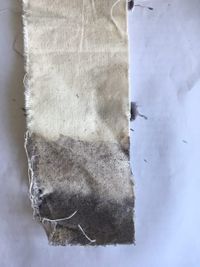
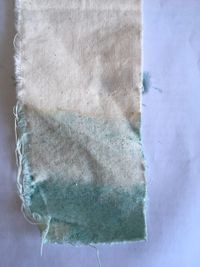
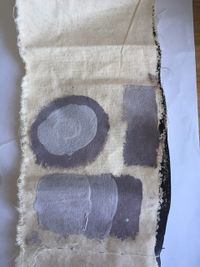
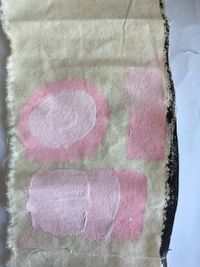
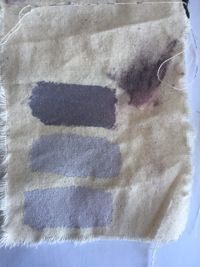
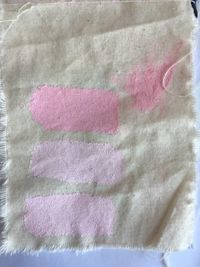
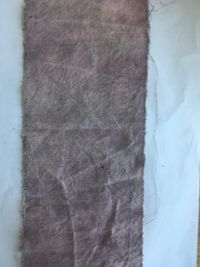
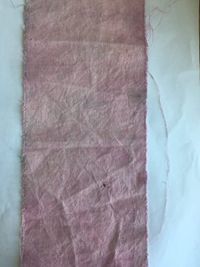
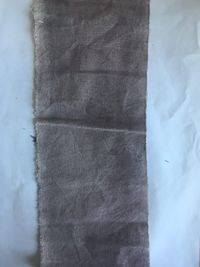
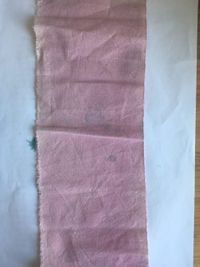

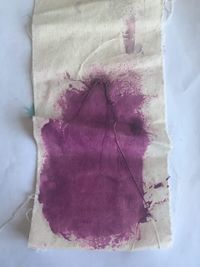
weaving with conductive thread
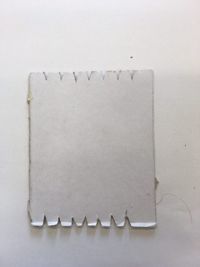
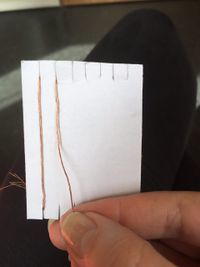

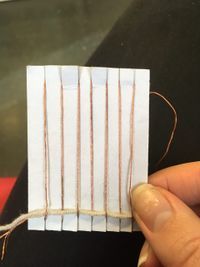
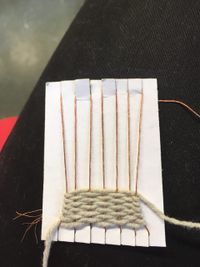

Heating a sample with conductive copper thread (twisted and unisolated)

Weaving
First weft sample (this is made without a patron just doing)
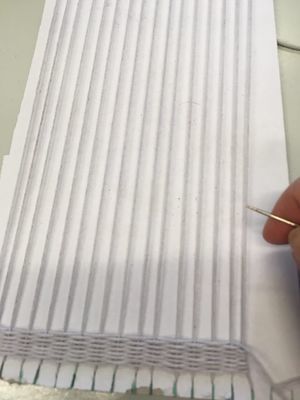
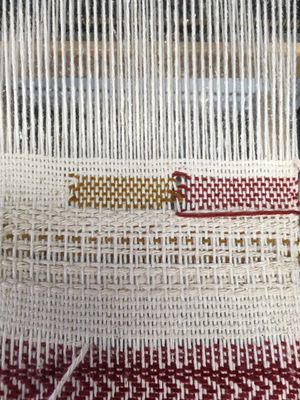
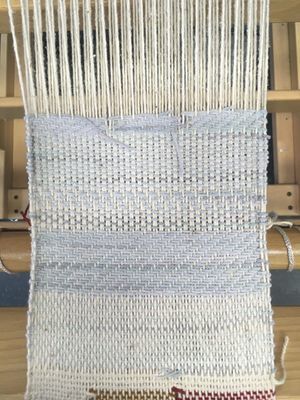
Process form plain yarn,Dying, weaving, and electronics to a screen
Workshop TU Delft
12 april: TU Delft workshop, The screen.
With:
Jan Berends : werktuigbouwkunde bachelor, Systems and Control
Emiel Jansen : werktuigbouwkunde bachelor, Master Integrated Product Design
Valentijn van der Scheur : werktuigbouwkunde bachelor, Systems and Control
Marijn Leeuwenberg : werktuigbouwkunde bachelor, Systems and Control
Ilse de Cock : Industrieel ontwerp
1: Wat is een beeldscherm?
2: Wat een beeldscherm voor hun betekent?
3: Van welke materialness kan je een beeldscherm maken?
4: Wat zie je als een Mogelijkheid als textile als beeldscherm?
